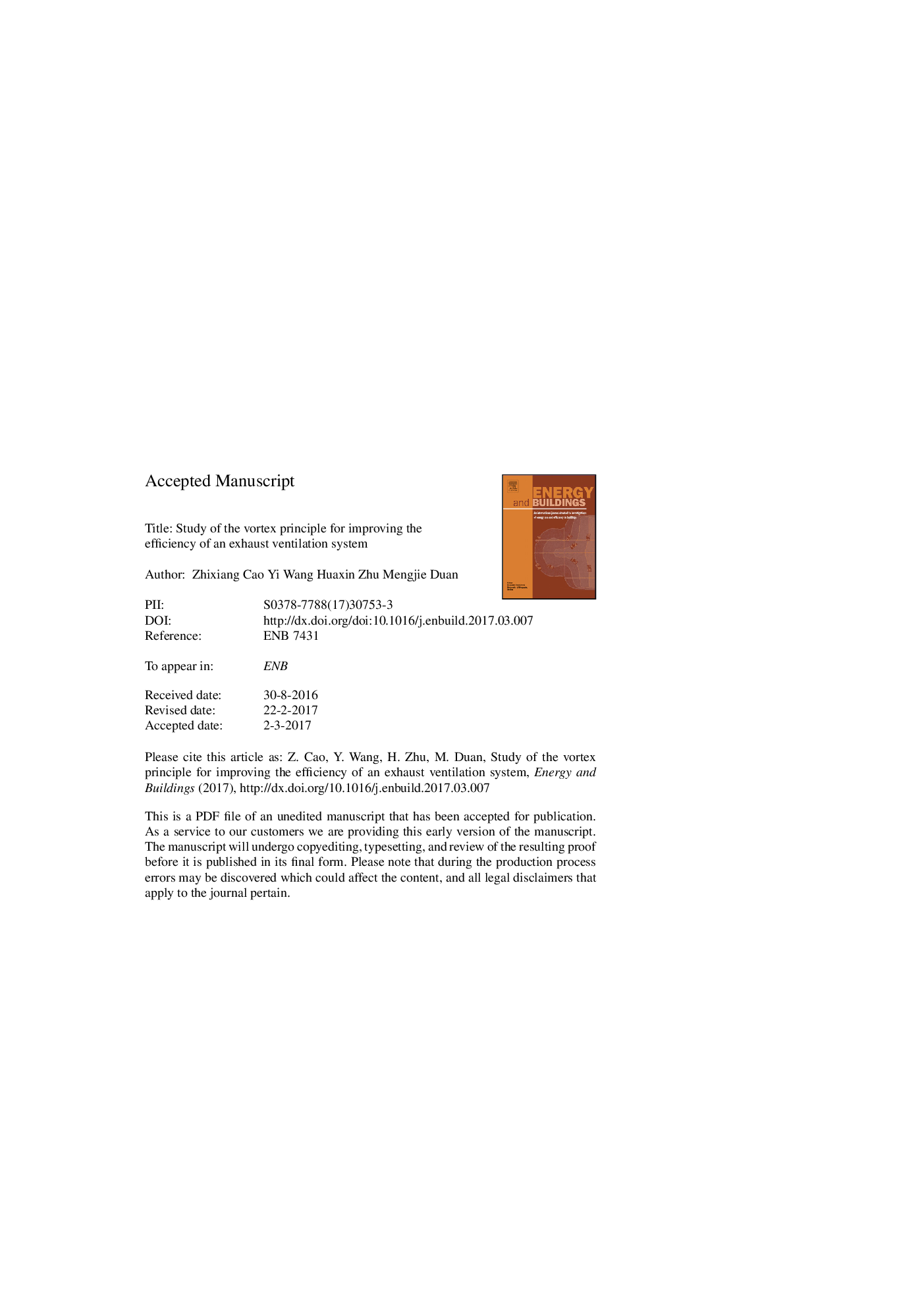| Article ID | Journal | Published Year | Pages | File Type |
|---|---|---|---|---|
| 4914206 | Energy and Buildings | 2017 | 30 Pages |
Abstract
In both industrial and civil buildings, local exhaust ventilation systems are widely used in pollutant control. The efficiency of such systems has an important influence on indoor air quality and energy consumption. A tornado is a type of rotating vortex with strong suction force that can lift heavy weights into the atmosphere. This article presents a novel type of artificial vortex exhaust device (AVED) using the principle of tornado-like vortex to improve the efficiency of local exhaust system. The formation of a tornado-like vortex requires a circular updraft fed by air possessing angular momentum with respect to the updraft center axis. To understand the flow characteristics of AVED, the velocity distribution and pressure distribution are investigated by varying the following parameters via experimental methods: radius ratio, lifting ratio, control distances, velocity of the jets and flow rate of exhaust hood. The experimental results indicate that increasing the velocity of the jets is beneficial to forming vortex, and the appropriate range to form an optimal vortex of the radius ratio is 1 to 2, and that of the lifting ratio is 0.127 to 0.256. Compared to the ordinary canopy exhaust hood, AVED has at least twice the control distance while only requiring less than half the flow rate of the exhaust hood.
Keywords
Related Topics
Physical Sciences and Engineering
Energy
Renewable Energy, Sustainability and the Environment
Authors
Zhixiang Cao, Yi Wang, Mengjie Duan, Huaxin Zhu,
